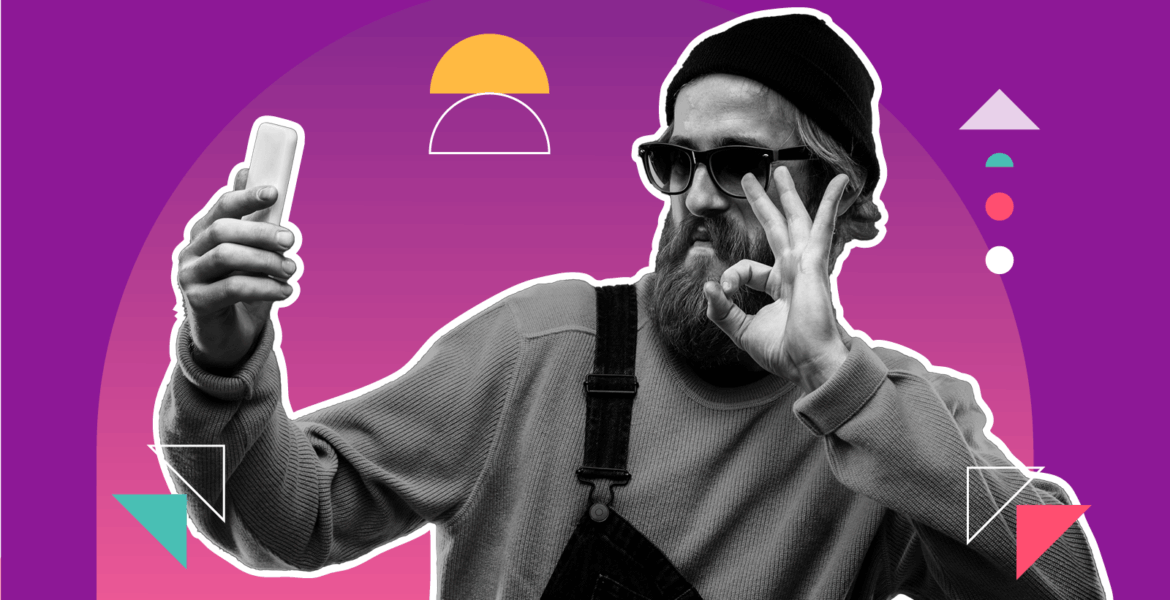For brands, tastemakers offer a chance to show up more meaningfully, and more memorably, says Stephen Maycock, Associate Influence Director, Born Social
When Unilever announced it had multiplied its investment in influencer marketing by twentyfold, it sent a clear signal: influence isn’t an emerging part of the marketing mix anymore – creators are at the core of brand-building campaigns, and we need to treat them as such. Combine this headline investment with Cannes Lions and D&AD Awards, introducing dedicated Creator categories, you feel the advertising sector sitting up straight and paying attention.
Looking inwards at influencer marketing, something curious has happened: marketers are under growing pressure to deliver work that not only performs in the short term but also earns cultural relevance, and they’ve fallen short on the latter, succumbing to a quick win strategy, chasing high view count and churning out content shaped more by the algorithm than by originality. The result? A sea of sameness – what Beth Bentley aptly describes as the “meh-ification” of culture (meaning that everything is a derivative of something else).
Audiences are taking note and rejecting dated, formulaic creator content, actively seeking something different: subjective taste, personality, and a clear point of view. It’s here, in the creator-first approach, that awards bodies are recognising creativity, putting originality and resonance ahead of performance metrics alone. So it’s time to look differently at who we partner with, and why.
Re-enter the tastemaker. A word once diluted to PR shorthand for ‘not quite a celebrity, but a person of interest’. However, in 2025, Tastemakers are back and developing a fresh perspective on curating cool. Tastemakers aren’t traditional influencers shouting into the void. They’re the new editors of culture – curators rather than broadcasters, writers, artists and creators who’ve built communities around authentic viewpoints and distinct perspectives, not just content volume. Tastemakers have self-confidence and assurance that doing their own thing will help the right audience find them, rather than playing to high-performing formats that win in short-term likes but blur into the mix of the masses.
Tastemaker Raven B Varona recently collaborated with Hyperice fitness equipment; beyond being a recognisable face, Raven co-directed the campaign, had creative stake and delivered on more than product promotion- she developed the Brand. Or GANT’s recent collaboration with menswear expert Edgy Albert, which leaned into his curatorial credibility to drive a reinvention of the brand’s American heritage and tailoring credentials. Food supplier DELLI leans on tastemakers to curate menu items, dinner inspiration and product wishlists, moving beyond social into OOH and digital experiences.
This new wave of tastemaker influence isn’t playing out solely on the familiar social platforms. Tastemakers are thriving in less over-saturated spaces: Substack newsletters, community-led podcasts, Discord groups, digital zines and the Step app. These aren’t just alternative channels – they’re where real attention lives.
For brands, the growth of these emerging spaces offers a chance to show up more meaningfully and more memorably. A feature in a tastemaker’s newsletter, or a co-designed product drop shared with a loyal Discord community, drives deeper brand connection than the most viral of Reels because tastemaking is about curation, not mass amplification.
To make this work, the distribution of content and deliverables needs rethinking. To complement a tried and true asset list, brands need to be more considered. Tastemakers should be empowered to create on their own terms and share work where their communities naturally gather. That might mean a slower burn, but it builds something stronger: relevance, not just reach.
As a result, the role of influence has evolved. We’re witnessing a shift from product promotion to brand building, where influencers co-create consumer touchpoints like podcasts, products or curated edits around personal taste. Influence is no longer the underdog in marketing. It’s the fastest-growing function in many teams. It’s winning awards. It’s unlocking commercial value. But if we want to keep pace with culture, we as the marketers holding the keys to the strategy need to evolve our approach. That means writing better briefs, thinking more editorially, and embracing taste over templates.
So if your current creator strategy still hinges on the loudest voice or the biggest audience, it might be time to turn the page. Because the tastemakers are back. And they’re already shaping what’s next.



